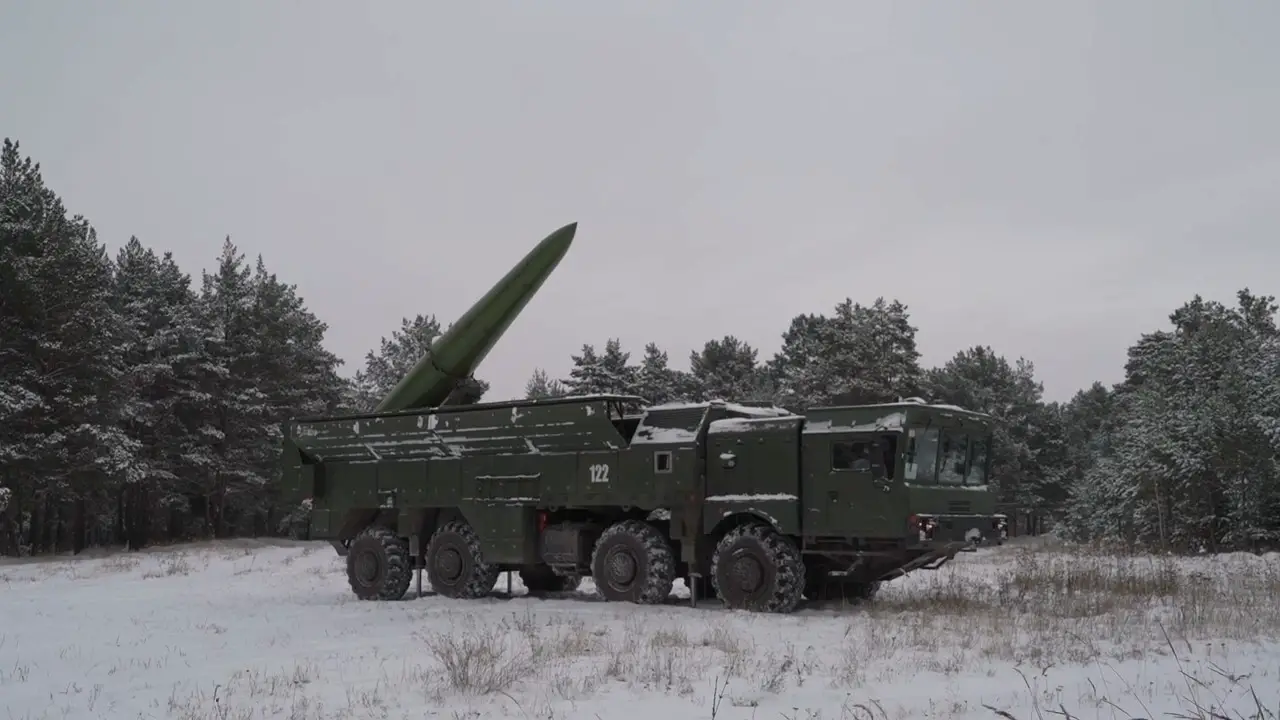The Belarusian Armed Forces have strengthened their military prowess with the commissioning of another Iskander-M tactical missile system, as announced by the Ministry of Defense of Belarus. The Ministry’s press office reported that another set of the Iskander-M tactical missile system was commissioned to the Belarusian army.” Accompanying this announcement, a video footage released by the press office showcased an unnamed deputy brigade commander who hailed the Iskander-M tactical system as “the best in its class.” He further emphasized that this recent arrival of the missile complex was not the last, highlighting Belarus’s commitment to bolstering its defense capabilities. Additionally, the officer noted that the missile system’s crew had undergone comprehensive training in the use of special missile payloads in Russia.
The Defense Ministry disclosed that Belarusian Iskander and S-400 crews had completed a thorough training course in joint Russian-Belarusian training centers. Simultaneously, the Ministry underscored that a substantial stockpile of Iskander missiles had been transported to Belarus, ensuring their readiness for any mission. Moscow facilitated the transfer of the Iskander missile system, capable of carrying nuclear weapons, to Minsk, and aided in the refurbishment of Belarusian planes for the deployment of special munitions. Belarusian pilots and missile crews received essential training in Russia. Putin further disclosed that the first batch of Russian nuclear munitions had already been delivered to Belarus by June 16, with the entire shipment expected to arrive by year’s end, according to his statement on that date. Belarusian President Lukashenko also affirmed that a significant portion of the planned munitions had already been brought inside the republic by June 23.
The 9K720 Iskander, with its NATO reporting name SS-26 Stone, is a highly mobile short-range ballistic missile system deployed by the Russian military. Iskander-M is a variant for the Russian Armed Forces with two 9M723 quasi-ballistic missiles with published range 415 km. These missiles travel at terminal hypersonic speeds, reaching 2100–2600 m/s (Mach 6–7), and can attain altitudes of up to 50 km while covering a range of up to 500 km. Originally designed to replace the OTR-21 Tochka systems in the Russian military, the Iskander boasts various conventional warheads, including cluster munitions, fuel-air explosive enhanced-blast warheads, high-explosive fragmentation warheads, earth penetrators for bunker busting, and electromagnetic pulse devices for anti-radar missions. Furthermore, the missile can carry nuclear warheads, enhancing its versatility and strategic importance.
Belarus’s acquisition of an undisclosed number of Iskander ballistic missile systems in May 2022, as announced by President Lukashenko, marks a significant enhancement of the country’s defense capabilities. Moreover, President Putin’s plan to provide Belarus with nuclear-capable Iskander missiles further underscores the strategic partnership between the two nations. This development comes on the heels of Belarusian President Alexander Lukashenko’s December 19, 2022 announcement regarding the commissioning of S-400 and Iskander missile systems in the republic. These missile systems were successfully delivered to Belarus in December and reportedly transferred to full Belarusian autonomous control in February 2023, with operations falling under the purview of the 465th Missile Brigade.
A batch of Iskander-M missile systems arrived in Belarus from Russia.
According to @Hajun_BY, a military cargo train with at least 10 pieces of Iskander-M missile systems arrived at Asipovichy station (Mahiliou region) from Kapustin Yar village, Astrakhan oblast, Russia.
It’s… pic.twitter.com/9IxenOZINp
— Belarusian Hajun project (@Hajun_BY) August 30, 2023















